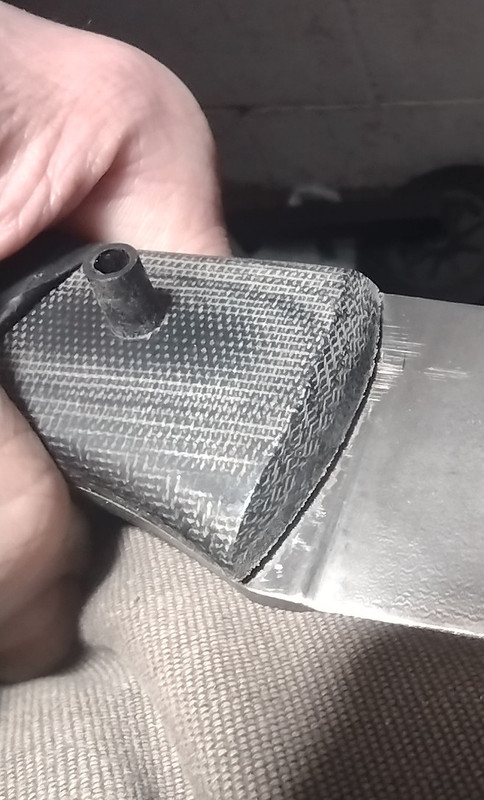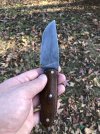Note that the minimum I am talking about is half that test data's thinnest test. I agree that there is a sweet spot between .005-.010" where the bond is strongest. My point was you don't want to go below that point in thickness.
I'll recap my statements on installing scales in case there is a translation difficulty:
The rougher the surface the better the bond.
The "reservoir" is only a minor additional thickness to get a sufficient bond. We aren't talking about a lake, just a shallow puddle.
The glue line should not be less than .005" thick.
With proper sanding at low grits and minimal clamping pressure the reservoir is probably unnecessary, but won't hurt on a properly installed knife handle.
Mechanical fasteners should always be used on knife scales.
Corby bolts are the strongest mechanical fastener for knife scales. Once you learn how to install them properly and drill the counterbore seats they are also very easy to install.
The best epoxy for scales is slow cure type resin. 24-hour cure is what I recommend.
Clean everything well and wipe off with alcohol.
Alcohol is the solvent for un-cured epoxies. Acetone is the solvent for cured epoxies.
All glued surfaces should be reasonably flat and sanded to no higher than 120 grit. A lower grit is even better.
DO NOT clamp hard. This can squeeze out most or all the resin from the joint, creating a "glue Starved" joint.
Kant-twist clamps are one of the best for clamping scales. Other choices are the weakest spring clamps you can find. Screw clamps are not a good choice.
With Corby bolts you don't use clamps at all. Just tighten to snug, wipe off the squeeze out, snug again a tad, clean up, let cure. Again, don't torque them down hard, just comfortably snug. Another plus with Corby bolts is the scales can be put on and taken off while fitting the scales to the tang. Clamping the scales together with the bolts will also guarantee that the scales will be identical at the ricasso when finishing that area prior to final assembly.
That should provide the basic info I was trying to convey.
I'm going to start dropping out of these discussions when Natlek starts in. I have better use of my time than replying to a troll. Natlek can post whatever he wants, I'm not going to respond. You folks deal with him.
However, as a moderator, if any thread takes a downward turn or becomes argumentative, I or one of the other mods will step in.







